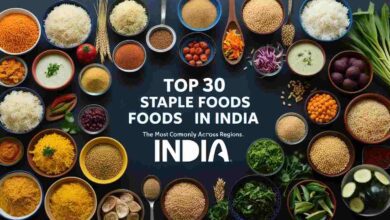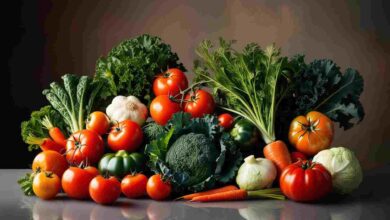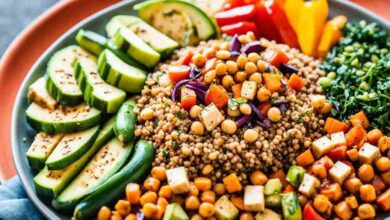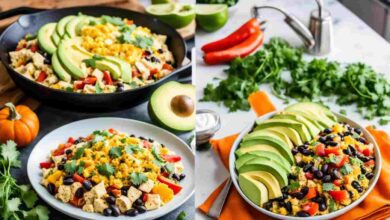Is Indian Cuisine Healthy
"Examining the Nutritional Benefits and Health Aspects of Indian Cuisine"
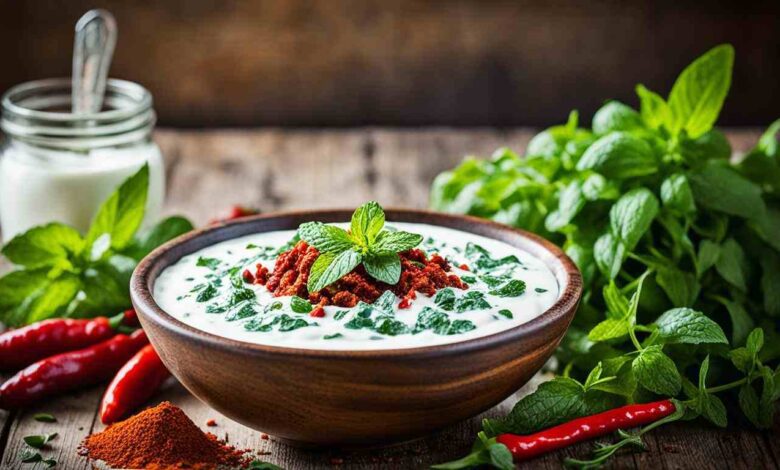
Is Indian Cuisine Healthy? Indian food is famous for its tasty flavors and bright colors. It comes in many different dishes, each with its own special taste. But, you might ask.
Restaurant Indian food can be greasy and rich. But, cooking at home makes it healthier. Home-cooked meals use less oil and cream.
Indian food often has whole grains, beans, veggies, and spices. These give you lots of nutrients. Herbs like turmeric, ginger, and cinnamon add flavor and health benefits.
Key Takeaways
- Indian cuisine can be a healthy option when prepared at home with a focus on whole, nutrient-dense ingredients.
- Spices and herbs commonly used in Indian cooking, such as turmeric, ginger, and cinnamon, offer additional health benefits.
- Some restaurant dishes may be high in calories, fat, and indulgent ingredients, but home-cooked Indian meals can be a nutritious choice.
- Incorporating a variety of lentils, legumes, vegetables, and whole grains in Indian dishes provides a wealth of essential vitamins, minerals, and fiber.
- Moderation and portion control are key when enjoying Indian cuisine, as some dishes can be calorie-dense.
Introduction to Indian Cuisine
India’s food culture is rich and full of life. It comes from the country’s long history, geography, and many religions. The food is known for its amazing tastes, special spice mixes, and health benefits. From the hot curries in the North to the sweet biryani in the South, Indian food is a journey for your taste and health.
Diversity and History of Indian Food
Indian food is a mix of old traditions and new tastes. It has been shaped by foods from places like Persia, the Middle East, and ancient Greece. These flavors have blended into Indian food, making it unique and exciting.
Influence of Ayurvedic Principles
Ayurveda is at the core of Indian cooking. It teaches about balance and health in the body. This way of cooking picks ingredients and prepares them with the body’s needs in mind. It makes sure Indian food is not just tasty but also good for your health.
| Ayurvedic Principle | Benefit |
|---|---|
| Balance of Flavors | Supports digestive function and overall health |
| Use of Spices | Enhances flavor and provides anti-inflammatory, antioxidant, and antimicrobial properties |
| Seasonal Eating | Aligns with the body’s natural rhythms and supports immune function |
Indian cuisine is a mix of history, tradition, and health tips. It offers a world of flavors and health benefits to discover.
Nutritional Powerhouses in Indian Ingredients
Indian food is full of healthy ingredients. It has lentils, legumes, and lots of spices. These foods are great for your health.
Lentils and Legumes: Protein-Packed Gems
Lentils and legumes are key in Indian cooking. You’ll find them in dishes like dal and chana masala. They are full of protein, fiber, vitamins, and minerals.
Eating these can lower your risk of heart disease, diabetes, and some cancers.
Spices: Adding Flavor and Antioxidants
Spices make Indian food taste great. They include ginger, turmeric, and cumin. These spices are full of antioxidants and can fight inflammation.
Ginger helps with stomach issues. Turmeric and cumin are good for the heart and can ease muscle pain. They might even help fight cancer.
“Incorporating a variety of these spices into your meals not only adds a burst of flavor but also has the potential to provide additional nutrients and health benefits.”
Protein-Rich Options in Indian Cuisine
Indian food has many protein-rich foods that you can add to your meals. Protein helps build and repair tissues, supports your immune system, and makes you feel full. This is good for your health and helps with weight control.
Meat, Poultry, and Seafood Dishes
Indian food has many tasty dishes with protein. You can find lean meats like chicken, lamb, and goat. There are also fresh fish and shrimp.
Dishes like Tandoori Chicken and Rogan Josh are full of protein. They also have spices that make food taste great.
Dairy and Plant-Based Protein Sources
Indian food has lots of protein from dairy and plants too. You can find paneer, chickpeas, and lentils in dishes like Palak Paneer and Chana Masala. These give you plant-based protein with whole grains for more nutrition.
Dairy like yogurt and milk are also used in cooking. They add protein to your meals.
Adding these protein-rich foods lets you enjoy Indian flavors and support your health. Whether you like animal or plant-based proteins, Indian cuisine has many options for you.
| Food Item | Protein Content (per 100g) |
|---|---|
| Chickpeas | 15g |
| Lentils | 9g |
| Paneer (Cottage Cheese) | 18g |
| Chicken Breast | 31g |
| Salmon | 20g |
| Eggs | 13g |
Eating high-protein Indian foods can help you lose weight by burning more calories. These foods are also good for muscle growth, bone health, and fixing tissues.
“Protein is essential for sustaining healthy tissues, promoting muscle growth, and supporting overall well-being. Indian cuisine offers a variety of protein-packed options to meet your daily needs.”
Whole Grains: A Staple in Indian Meals
Whole grains are key in Indian food, with a long history. They are crucial for a healthy diet. Unlike refined grains, whole grains keep the whole grain kernel, making them more nutritious.
Some common whole grains in Indian food are:
- Whole wheat
- Millet
- Sorghum
- Rice
These grains are often in dishes like roti, dosa, idli, or biryani. They are full of fiber, B vitamins, and minerals. These help keep energy up and aid digestion. Trying different whole grains can make meals more interesting and healthy.
Studies show that eating whole grains can lower the risk of type 2 diabetes. A diet with whole grains can also help people with type 2 diabetes.
Also, cereals like rice, wheat, and maize are a big part of the world’s food. Adding various whole grains to your meals can be tasty and good for your health.
| Whole Grain | Health Benefits |
|---|---|
| Barley | Helps lower cholesterol, control diabetes, and lower blood pressure. Also a rich source of zinc. |
| Makkai (Corn) | A rich source of protein, iron, thiamine, folate, and vitamins A and B. Contains dietary fiber that improves digestive problems, lowers cholesterol, improves kidney problems, and boosts immunity. |
| Chickpeas | People who regularly eat chickpeas have higher intakes of essential nutrients. Half a cup of chickpeas has more than 7 grams of protein and more than 6 grams of fiber. |
| Kidney Beans | Linked to a lower incidence of chronic diseases such as diabetes, cancer, obesity, and coronary heart disease. |
| Lentils | A great source of plant-based protein, with more than one-quarter of the calories from protein. |
Vegetables: A Colorful Variety
Indian food is known for its bright and varied vegetables. It has spinach, cauliflower, eggplant, and bell peppers. These veggies add color and health benefits to dishes. Tomatoes and potatoes came from colonial times but are now key in Indian cooking.
Popular Vegetable-Based Dishes
Vegetarian dishes are big in Indian food. They let veggies show off their taste and texture. Some top dishes include:
- Saag – A creamy, spinach-based curry that can be made with paneer (Indian cottage cheese) or chickpeas for a protein boost.
- Baingan Bharta – A smoky eggplant dish that is mashed and simmered with onions, tomatoes, and spices.
- Aloo Gobi – A classic combination of potatoes and cauliflower, sautéed with cumin, coriander, and turmeric.
- Sambar – A lentil-based vegetable stew flavored with tamarind and aromatic spices.
These dishes are full of flavor and good for you. Vegetables have vitamins, minerals, and antioxidants. These help keep you healthy and feeling good.
Indian cuisine offers a wide range of vegetables. You can add more plant-based foods to your meals. From curries to stir-fries, there are many ways to enjoy Indian veggies.
Yogurt: A Cooling and Nutritious Addition
Yogurt has been a key part of Indian food for a long time. It cools down the heat from spices and is full of nutrients. In Indian cooking, yogurt, or “curd,” is used in many ways. It’s the base for chaat dishes, sauces, marinades, and a cool side for spicy meals.
Raita is a popular yogurt dish in India. It goes well with biryanis and other rice dishes. Raita mixes yogurt, veggies, and spices. This makes the meal cool, tangy, and creamy.
Indian yogurt, or dahi, has more protein than Greek or American yogurt. A small serving of paneer, a fresh Indian cheese, has 10 grams of protein. This is great for keeping muscles strong and staying energized.
The probiotics in Indian yogurt help your gut and keep you healthy. You can keep homemade Indian yogurt in the fridge for up to three days. It stays good and creamy.
If you don’t eat dairy, almond milk yogurt is a good choice. It has the same nutrients as regular yogurt but is dairy-free.
Adding yogurt to your Indian cooking makes your dishes cool and creamy. It also brings many health benefits. Whether you like a cool raita or homemade yogurt, this ingredient is key to tasty and healthy Indian food.
Healthy Cooking Methods in Indian Cuisine
Indian food is healthy because of how it’s made. Traditional cooking uses simmering, sautéing, and slow cooking. These methods keep the nutrients in the food.
Simmering, Sautéing, and Slow Cooking
These cooking ways are key to Indian food’s healthiness. Simmering blends flavors while keeping ingredients whole. Sautéing uses a little oil to highlight spices and veggies.
Slow cooking, like making dals and curries, breaks down tough parts. This unlocks the nutrients in the food.
These methods make Indian food tasty and healthy. They keep the good stuff in the food. This means you get more vitamins, minerals, and antioxidants.
“Indian cuisine, when prepared using traditional methods and wholesome ingredients, can be an incredibly healthy and flavorful option.”
Adding Indian cooking to your life can help you eat well. It’s great for staying healthy, losing weight, or just feeling good.
Portion Control in Indian Meals
Enjoying Indian food can be healthy if you watch your portions. In many Indian homes, meals are shared family-style. This way, everyone takes smaller amounts and doesn’t eat too much.
It’s smart to watch how much you eat to get the most health benefits from Indian food. Some dishes are high in calories because of butter and ghee. But, by eating smaller amounts, you can still enjoy the taste and stay healthy.
A study by Lu et al. (2017) looked at a diet plan that includes Indian meals. It suggests eating lots of veggies, lean meats, and plant proteins like lentils. Whole grains and low-fat dairy help with weight loss and make eating fun and effective.
| Recommended Portion Sizes | Portion Size |
|---|---|
| Whole grains (e.g., brown rice, whole wheat chapati) | 1/2 cup cooked |
| Lean proteins (e.g., grilled chicken, fish, tofu, sprouts) | 3-4 oz (about the size of your palm) |
| Vegetables (e.g., brinjal, bhindi, lauki) | 1 cup raw or 1/2 cup cooked |
| Low-fat dairy (e.g., skim milk, low-fat yogurt) | 1 cup |
| Healthy fats (e.g., nuts, seeds, olive or canola oil) | 1-2 tbsp |
Follow these portion sizes and eat a variety of healthy foods to enjoy Indian cuisine. Remember, eating less is key to getting the most health benefits from these tasty dishes.
Plant-Based Options in Indian Cuisine
India is the top vegetarian nation in the world. It offers many plant-based dishes that are tasty and healthy. These dishes are great for vegans, vegetarians, or anyone who likes to eat less meat.
Indian food is full of protein-rich lentils and legumes. It also has many spices that help with digestion and fight inflammation. This makes Indian food a top choice for those looking for tasty and healthy meals.
Vegetarian and Vegan Indian Dishes
Popular vegetarian Indian dishes include Tikka Masala, Vindaloo, Korma, Biryani, Aloo Gobi, Chana Masala, and Palak Paneer. These dishes show off the rich and diverse tastes of Indian food. They use whole foods like veggies, grains, and spices that are good for you.
Indian food has a long tradition of vegetarian and vegan dishes. The North has flatbreads and legume gravies. The South has coconut-based dishes, and the East has mustard-oil specialties. There are many plant-based choices for everyone’s taste and needs.
Whether you want to try Indian street food or enjoy home-cooked curries, there are many healthy options. You can find answers to questions like is indian cuisine healthy?, is indian food healthy?, is eating indian food good for you?, and more. These options are great for anyone, especially pregnant women.
FAQ
Is Indian cuisine healthy?
Yes, Indian food can be good for you. Some restaurant dishes might have a lot of fat and calories. But, cooking Indian food at home often means using whole grains, beans, veggies, and spices. These ingredients are full of health benefits.
Is Indian food healthy during pregnancy?
Yes, it’s a great choice for pregnant women. Indian dishes are packed with protein, fiber, vitamins, and minerals. These are key for the baby’s growth and the mom’s health.
Can Indian cuisine aid in weight loss?
Yes, it can help with weight loss if made healthily. Indian food often uses spices, lean proteins, beans, and veggies. These make you feel full and give you important nutrients without too many calories.
Is Indian food healthy for diabetics?
Yes, it’s a good choice for people with diabetes. Many Indian dishes use whole grains, beans, and veggies. These are low in sugar and high in fiber, which helps control blood sugar.
What are the health benefits of Indian food?
Indian food is full of health perks. It has antioxidants from spices, fiber and protein from beans and veggies. It also has vitamins and minerals from the many vegetables used. Eating Indian food can lower the risk of heart disease, diabetes, and some cancers.

